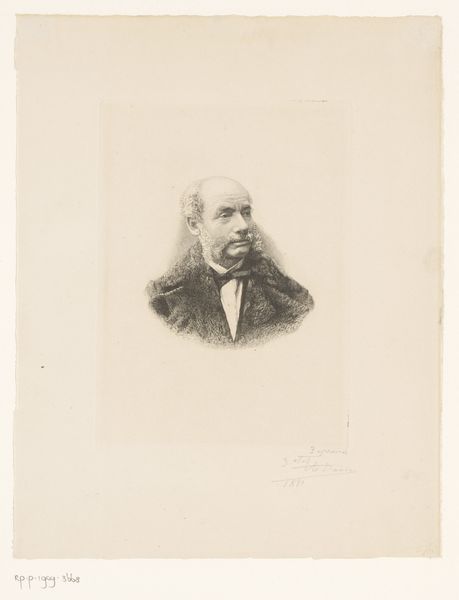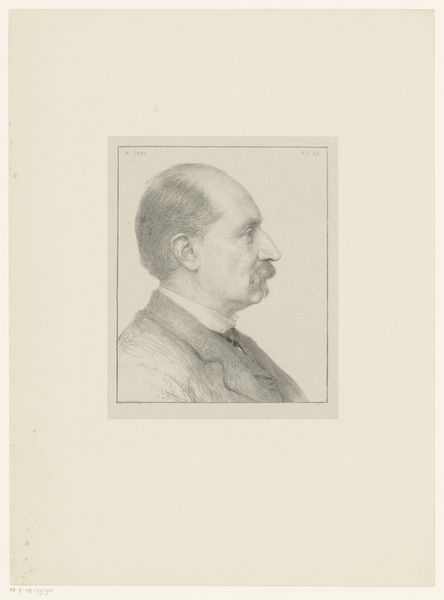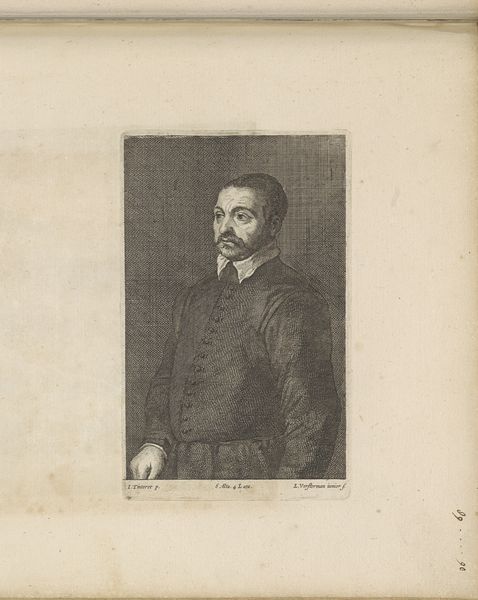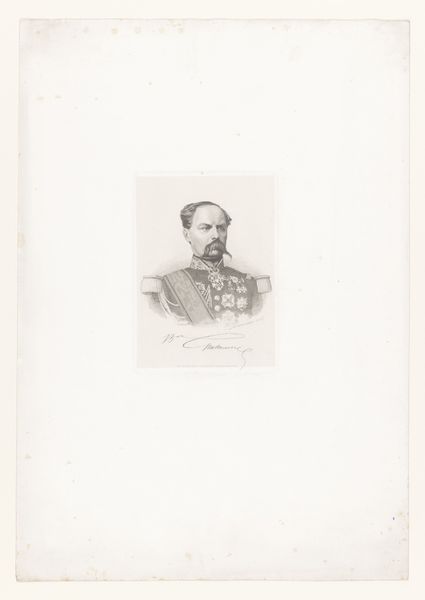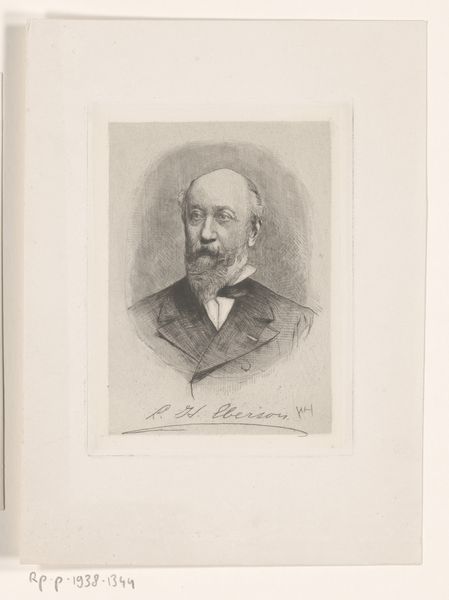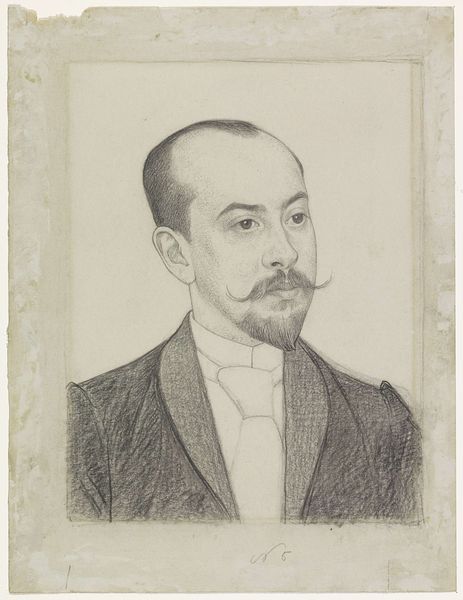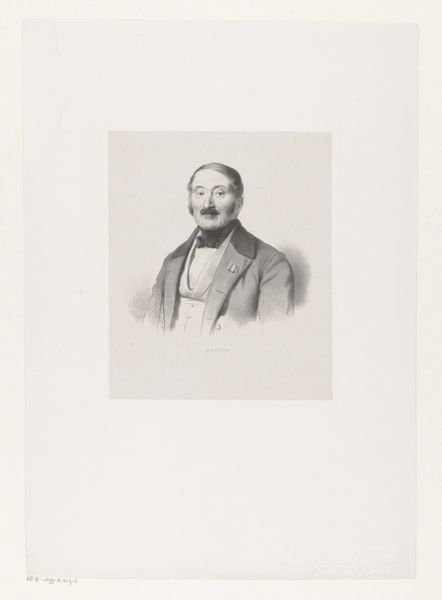
drawing, pencil
#
portrait
#
pencil drawn
#
drawing
#
aged paper
#
light pencil work
#
pencil sketch
#
pencil drawing
#
pencil
#
line
#
realism
Dimensions: height 130 mm, width 90 mm
Copyright: Rijks Museum: Open Domain
Editor: Here we have a reproduction of a drawn portrait of Louis Couperus, made sometime after 1897, rendered in pencil. The mood is quite contemplative. What do you see in this piece? Curator: This drawing, though seemingly simple, speaks volumes about the gaze and representation within portraiture of that era. How does this portrayal of Couperus, a known literary figure, negotiate his public persona versus his inner self? Consider the subtle power dynamics inherent in portraiture, especially given Couperus’s identity within the queer literary landscape. Editor: Power dynamics? I hadn't thought of that. Is it because portraiture was typically for the wealthy or powerful? Curator: Exactly. But also consider the nuances of portraying a figure who may have occupied a marginalized position in society. How does the artist subtly convey, or perhaps conceal, aspects of Couperus' identity? What is left unspoken? What might be read as subversion of dominant societal norms? Editor: So, it's not just about capturing a likeness, but also about interpreting the subject within their social context? Curator: Precisely. Think about how identity is performed and perceived. A pencil drawing feels quite intimate, doesn’t it? It could indicate how the artwork humanizes Couperus but also runs the risk of diluting queer identity through artistic license. Editor: That gives me a lot to think about. It's much more complex than just a portrait of a writer. Curator: Indeed. And understanding that complexity is crucial to unlocking deeper meanings within the artwork. It forces us to grapple with representation and the politics of seeing.
Comments
No comments
Be the first to comment and join the conversation on the ultimate creative platform.
